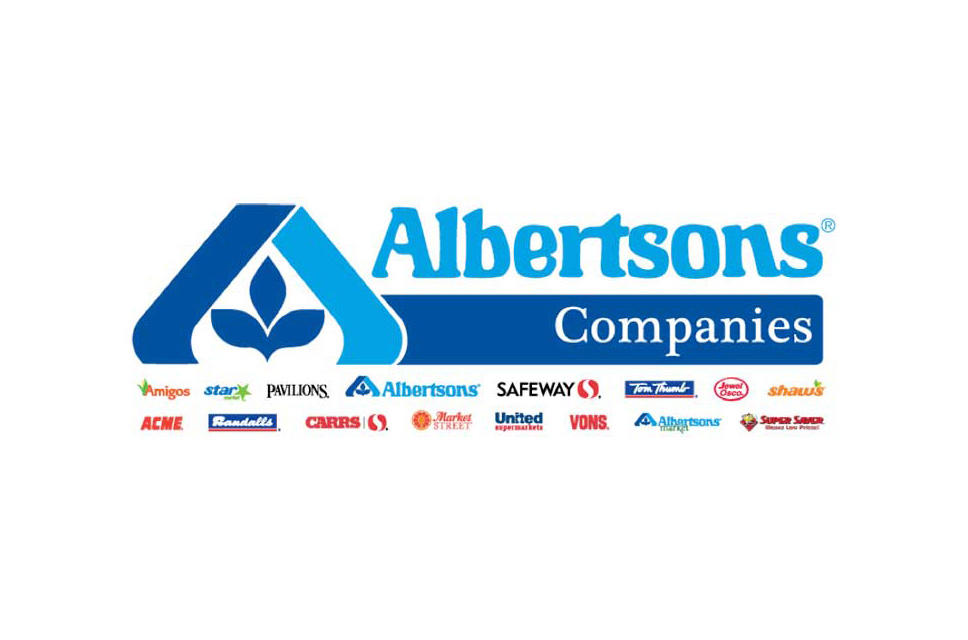Albertsons Cos. Inc. has reported results for the third quarter of fiscal 2019, which ended Nov. 30, 2019. At the time of the report, the company operated 2,260 retail food and drug stores with 1,732 pharmacies, 402 associated fuel centers, 23 dedicated distribution centers and 20 manufacturing facilities. Its stores predominantly operate under the banners Albertsons, Safeway, Vons, Pavilions, Randalls, Tom Thumb, Carrs, Jewel-Osco, Acme, Shaw’s, Star Market, United Supermarkets, Market Street, Amigos, Haggen and United Express.
Third quarter of fiscal 2019 highlights
- Identical sales growth of 2.7 percent; marked the eighth consecutive quarter of identical sales growth
- Net income of $55 million
- Adjusted EBITDA of $634 million
- Own Brands sales penetration reached a new high of 25.6 percent
- Online home delivery and Drive Up and Go sales growth of 34 percent
- Just for U registrations and digital coupon redemptions up 25 percent and 31 percent, respectively
“Our identical sales momentum continued in the third quarter, as our core business continues to deliver strong growth,” said Vivek Sankaran, president and CEO. “We are focused on providing our customers with an easy shopping experience, exciting merchandise and friendly customer service in our omni-channel shopping environment, and creating deep and lasting customer relationships.”
“Our productivity and cost reduction initiatives are also beginning to take shape, which we intend to use to fund strategic growth investments, offset cost inflation and support earnings growth,” said Sankaran.
The term “identical sales” includes stores operating during the same period in both the current fiscal year and the prior fiscal year, comparing sales on a daily basis. Direct-to-consumer internet sales are included in identical sales, and fuel sales are excluded from identical sales.
Third quarter of fiscal 2019 results
Sales and other revenue increased 1.9 percent to $14.1 billion during the 12 weeks ended Nov. 30, 2019, compared to $13.8 billion during the 12 weeks ended Dec. 1, 2018. The increase was driven by the company’s 2.7 percent increase in identical sales, partially offset by a reduction in sales related to store closures since the third quarter of fiscal 2018 and lower fuel sales. Identical sales continued to benefit from our growth in online home delivery and Drive Up and Go sales and Own Brands sales growth.
Gross profit margin increased to 28.3 percent during the third quarter of fiscal 2019 compared to 27.8 percent during the third quarter of fiscal 2018. Excluding the impact of fuel, gross profit margin increased 40 basis points compared to the third quarter of fiscal 2018, primarily due to improved product mix, including increased Own Brands penetration and lower shrink expense, partially offset by higher rent expense related to sale leaseback transactions.
Selling and administrative expenses increased to 27 percent of sales during the third quarter of fiscal 2019 compared to 26.5 percent of sales for the third quarter of fiscal 2018. Excluding the impact of fuel, selling and administrative expenses as a percentage of sales increased 40 basis points. The increase in selling and administrative expenses was primarily attributable to higher rent and occupancy costs and strategic investments in digital and technology initiatives.
Net income was $54.8 million during the third quarter of fiscal 2019 compared to net income of $45.6 million during the third quarter of fiscal 2018.
Year-to-date Q3 2019 results
Sales and other revenue increased 1.1 percent to $47 billion during the first 40 weeks of fiscal 2019 compared to $46.5 billion during the first 40 weeks of fiscal 2018. The increase in sales was driven by the company’s 2.1 percent increase in identical sales during the first 40 weeks of fiscal 2019, partially offset by a reduction in sales related to store closures and lower fuel sales.
Gross profit margin increased to 28 percent during the first 40 weeks of fiscal 2019 compared to 27.6 percent during the first 40 weeks of fiscal 2018. Excluding the impact of fuel, gross profit margin increased 30 basis points.
Selling and administrative expenses decreased to 26.7 percent of sales during the first 40 weeks of fiscal 2019 compared to 26.9 percent of sales during the first 40 weeks of fiscal 2018. Excluding the impact of fuel, selling and administrative expenses as a percentage of sales decreased 30 basis points.
During the first 40 weeks of fiscal 2019, the company spent approximately $1.1 billion in capital expenditures, which included investments in strategic technology, the completion of 153 remodel projects and the opening of 12 new stores.

